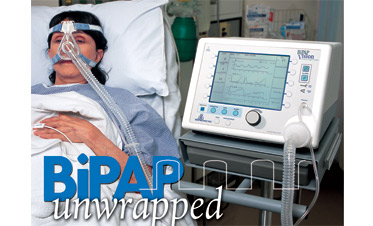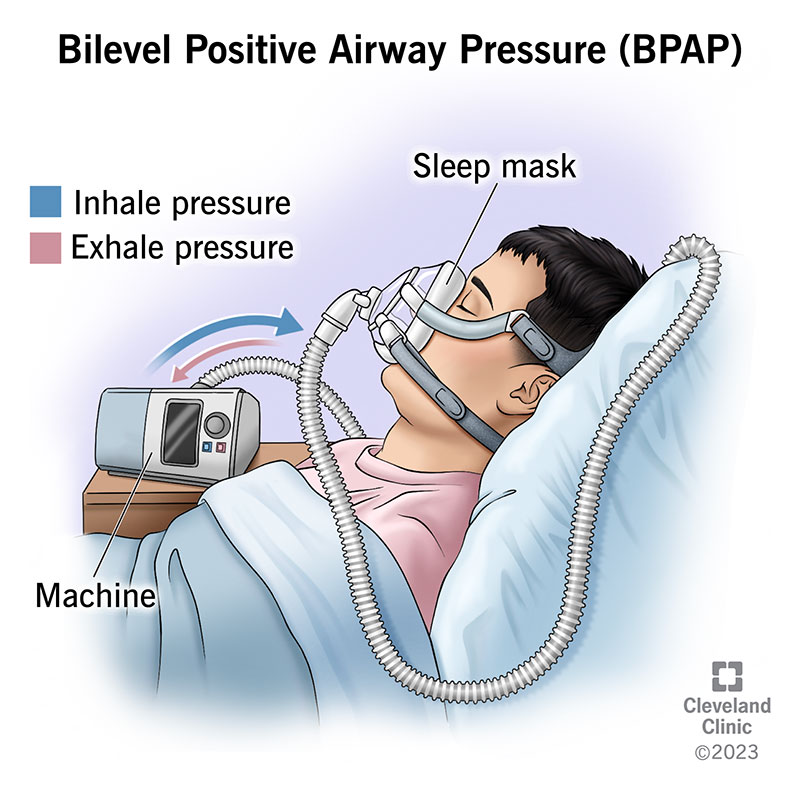Bipap vs. CPAP: Which Is the most effective for Your Rest Disorder?
When navigating the intricacies of rest problems, the selection between BiPAP and CPAP therapy is an essential consideration. While CPAP offers a consistent air flow appropriate for obstructive rest apnea, BiPAP's dual pressure settings might boost convenience for those with more detailed respiratory issues.
Understanding Rest Disorders
Rest disorders encompass a variety of conditions that disrupt regular sleep patterns, impacting both the top quality and duration of rest. These disorders can show up in numerous types, consisting of sleeplessness, rest apnea, narcolepsy, troubled leg syndrome, and parasomnias. Each problem provides one-of-a-kind challenges, typically resulting in considerable daytime exhaustion, cognitive impairment, and emotional disturbances.
Sleep problems is characterized by trouble falling or remaining asleep, while rest apnea includes repeated interruptions in breathing throughout sleep, often leading to fragmented rest. Narcolepsy, on the various other hand, is marked by extreme daytime drowsiness and sudden rest attacks. Troubled leg syndrome triggers unpleasant sensations in the legs, triggering an uncontrollable impulse to relocate them, which can additionally impede the capability to sleep.
The effect of rest disorders extends beyond individual health, affecting general productivity, partnerships, and lifestyle. Understanding the details nature of each disorder is critical for reliable medical diagnosis and treatment. As rest wellness comes to be progressively recognized as a vital part of total health, addressing these conditions is essential for boosting both rest quality and daily functioning.
How CPAP Functions
Constant Positive Respiratory Tract Stress (CPAP) therapy is regularly employed as a primary treatment for obstructive rest apnea (OSA) The device of CPAP includes the usage of a maker that provides a constant stream of air through a mask put on during rest. This airflow maintains favorable stress in the air passage, preventing the collapse or blockage of the throat that can happen throughout rest.
When a client takes a breath in, the CPAP device provides a continuous flow of air, making sure that the airway stays open - BiPAP Rental. This not just alleviates the signs of OSA, such as snoring and interrupted sleep patterns, yet additionally decreases the associated health risks, consisting of cardio issues and daytime fatigue
The pressure setups on a CPAP equipment can be customized to meet specific patient demands, often determined with a sleep research study. People generally undertake titration researches to find the optimal pressure level for their unique condition. Routine follow-up and changes may be needed to make certain performance and convenience. On the whole, CPAP therapy has actually been revealed to considerably boost the top quality of rest and overall wellness for people experiencing from obstructive sleep apnea.
Exactly How BiPAP Functions
BiPAP, or Bilevel Favorable Respiratory Tract Pressure, is a specific form of non-invasive air flow that is particularly advantageous for individuals with conditions such as complex sleep apnea or respiratory disorders. Unlike CPAP, which delivers a constant stream of air at a solitary stress, BiPAP gives 2 distinct pressure setups: a higher inspiratory stress for inhalation and a reduced expiratory pressure for exhalation. This dual-pressure technique allows for much easier breathing, reducing the initiative called for during exhalation.
The tool operates with a mask fitted over the nose or mouth, attached to a maker that generates air pressure. When the client inhales, the maker delivers the greater stress to aid with air movement, making sure that the respiratory tract stays open. Upon exhalation, the equipment automatically lowers the stress, making it extra comfy for the client to breathe out.

Key Distinctions Between BiPAP and CPAP
:max_bytes(150000):strip_icc()/GettyImages-635878206-25ee9a42856f41cfab94873074580679.jpg)
In comparison, BiPAP (Bilevel Positive Respiratory tract Pressure) uses 2 different pressure setups: one for inhalation and a reduced one for exhalation. This double pressure system permits even more comfortable breathing, specifically for individuals who battle with breathing out versus a constant pressure. BiPAP is often recommended for clients with intricate rest apnea, persistent obstructive lung disease (COPD), or those who call for additional assistance throughout rest.
Moreover, the intricacy of BiPAP tools usually results in a greater cost and needs a lot more mindful titration than CPAP. BiPAP Rental. Recognizing these crucial differences can help in recognizing which device may be better for specific rest conditions, establishing the click to find out more groundwork for educated therapy choices
Picking the Right Therapy
Exactly how can one determine one of the most ideal treatment for handling rest problems? The decision in between BiPAP and CPAP treatment primarily depends upon the certain attributes of the rest condition, the patient's overall wellness, and their comfort with the tool. CPAP, which supplies a continual stream of air, is typically recommended for obstructive rest apnea (OSA) It maintains an open respiratory tract during rest, efficiently protecting against hypopneas and apneas.
Alternatively, BiPAP provides two degrees of stress: one for inhalation and a reduced one for exhalation. This twin pressure system read more is advantageous for individuals with complicated rest apnea or those that experience problem exhaling versus a constant stress. Additionally, BiPAP is frequently recommended for people with respiratory conditions, such as persistent obstructive pulmonary condition (COPD), where varying pressure settings can improve convenience and conformity.
Ultimately, a thorough assessment by a sleep professional, consisting of a rest study, can help establish which therapy straightens finest with the patient's requirements. Factors such as comfort, convenience of usage, and specific medical conditions must also be taken right into factor to consider to enhance treatment outcomes.
Final Thought
In summary, both BiPAP and CPAP offer distinctive purposes in the monitoring of sleep disorders. CPAP works for obstructive rest apnea through consistent air movement, while BiPAP uses dual pressure setups that boost convenience for those with intricate rest apnea or respiratory issues. The choice in between these therapies should be led by specific demands and conditions, requiring a comprehensive evaluation by a rest expert to make certain ideal therapy outcomes and boosted high quality of sleep.

Overall, CPAP treatment has actually been revealed to considerably enhance the high quality of rest and general health for individuals experiencing from obstructive sleep apnea.
BiPAP is often suggested for individuals with complicated rest apnea, chronic obstructive lung illness (COPD), or those that call for Recommended Site added assistance during sleep.
CPAP is efficient for obstructive rest apnea via consistent airflow, while BiPAP provides dual pressure settings that improve convenience for those with intricate rest apnea or respiratory system issues.